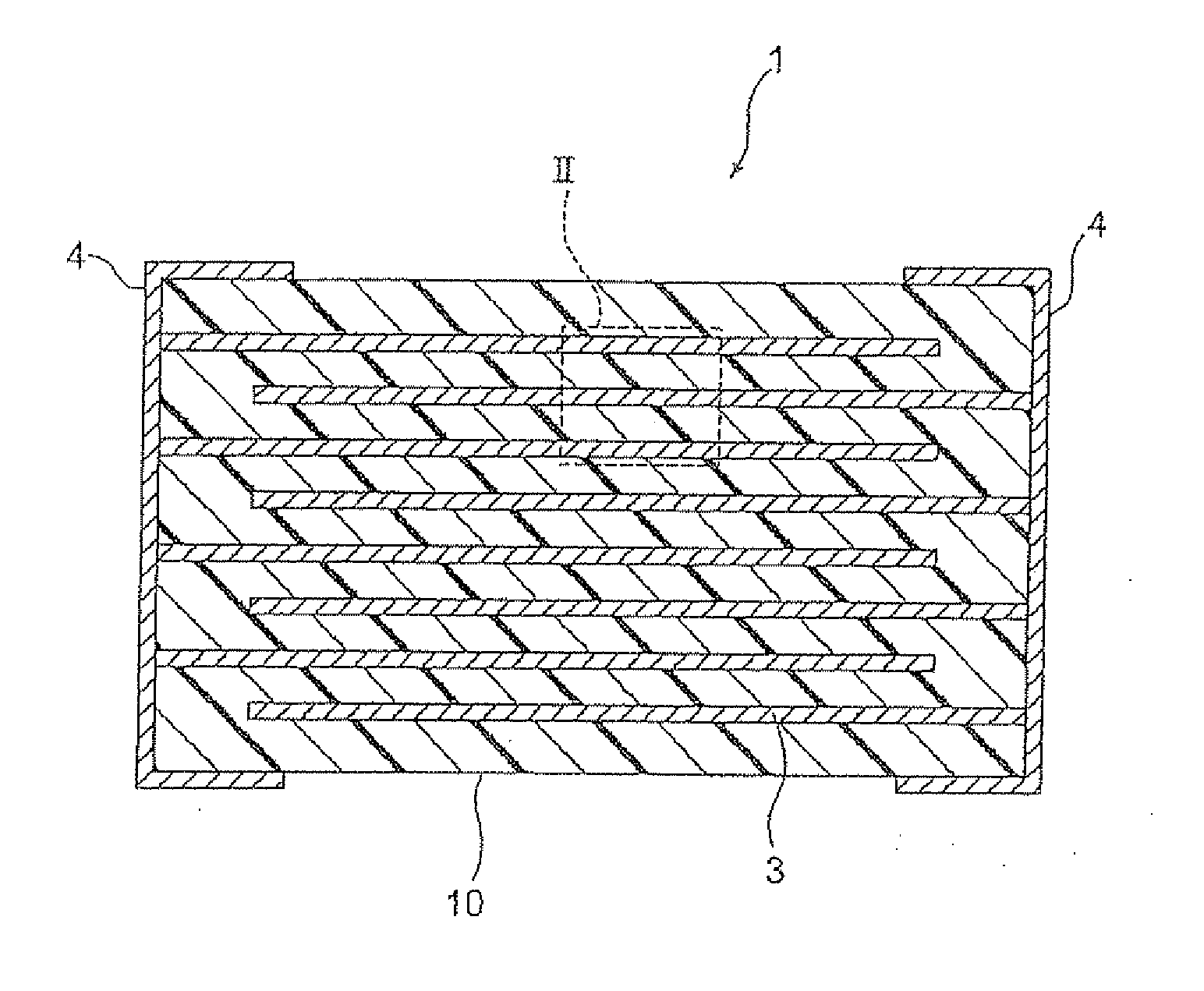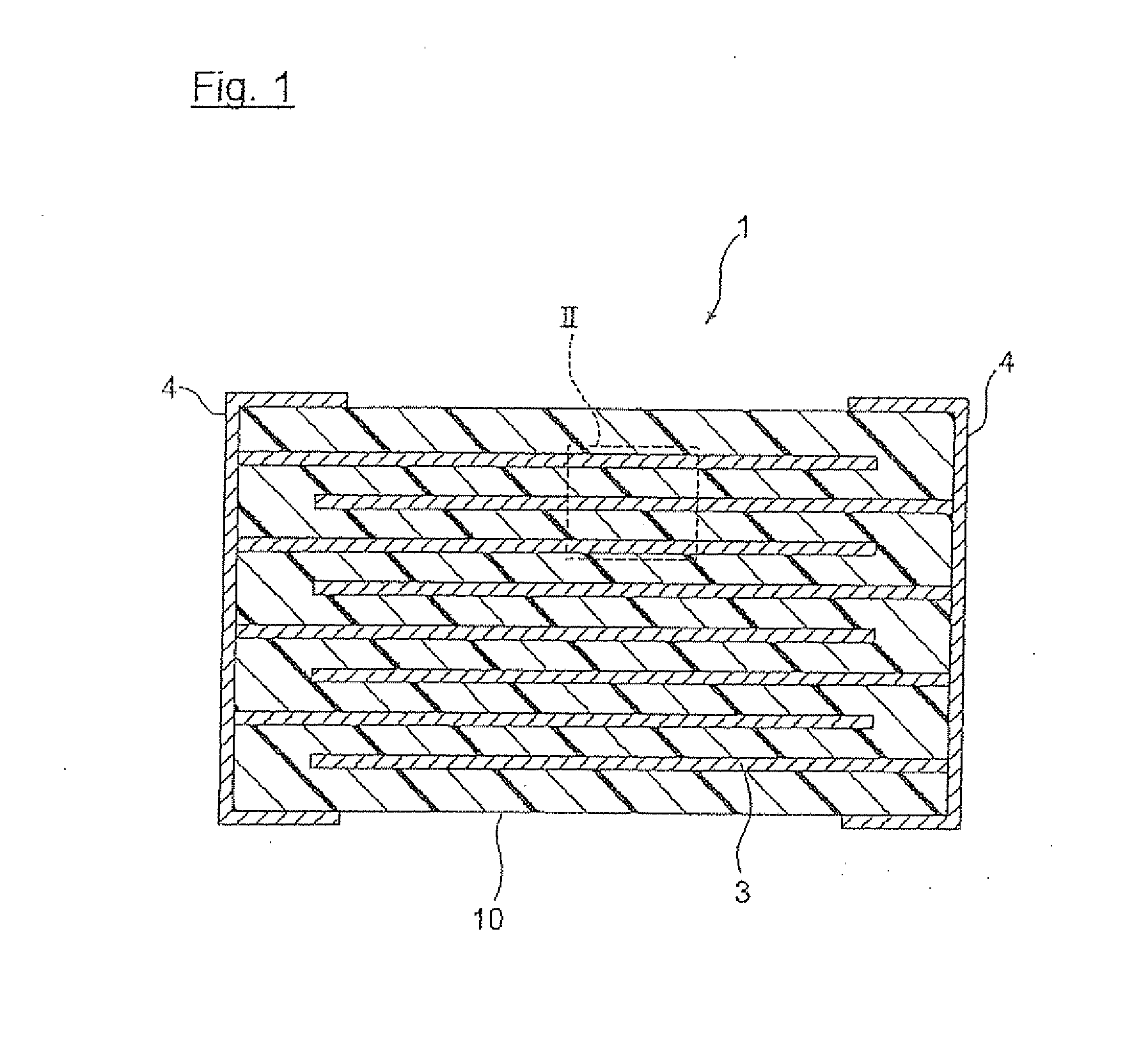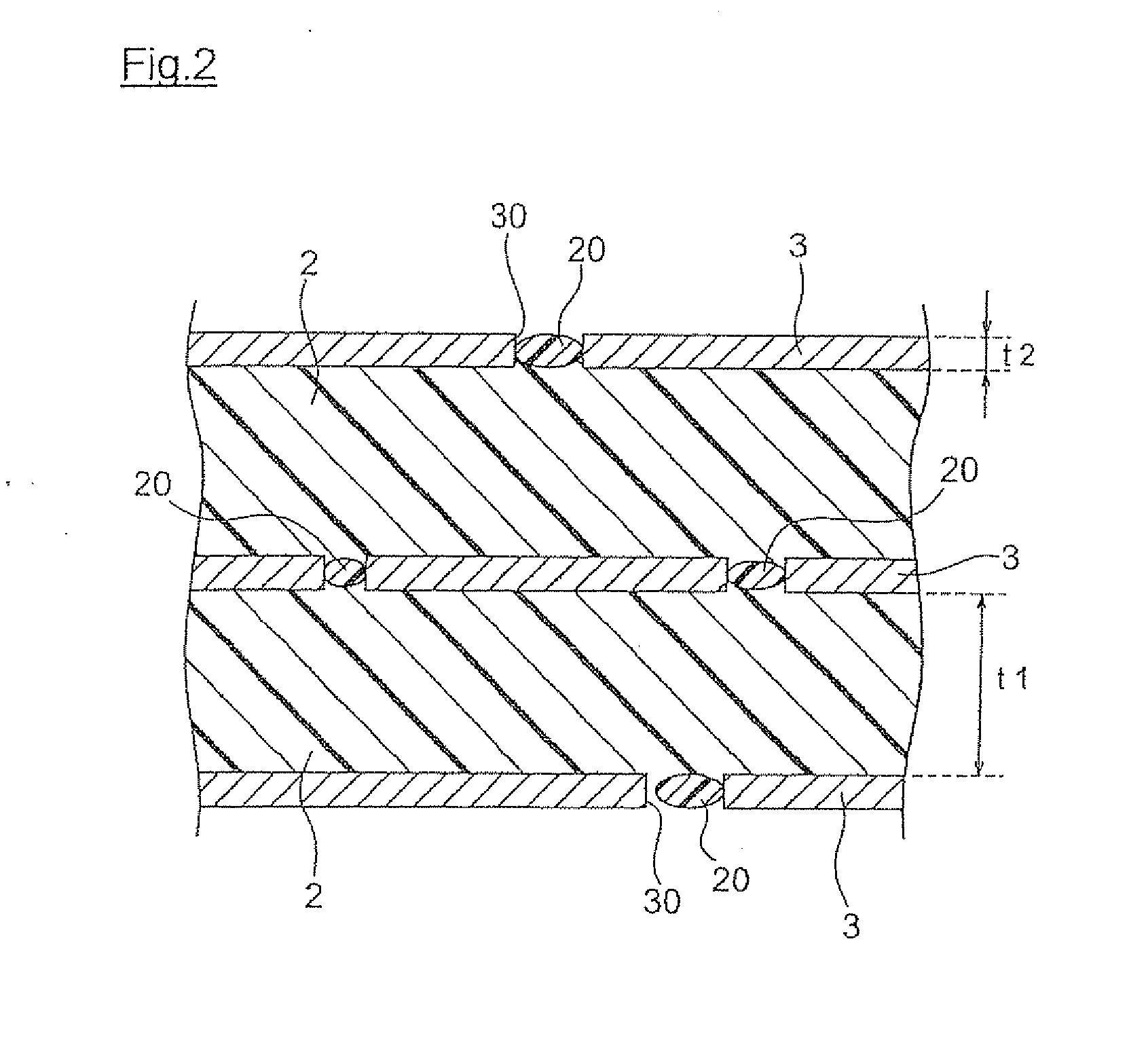Multilayer ceramic electronic component
a technology of electronic components and ceramics, applied in the direction of fixed capacitor details, stacked capacitors, fixed capacitors, etc., can solve the problems of reducing the lifetime of high temperature accelerated devices, reducing the capacitance obtained, and unable to obtain desired properties, etc., to achieve the effect of enhancing the effect, reducing the properties of the dielectric layer (existing between the electrode layers), and enhancing the
- Summary
- Abstract
- Description
- Claims
- Application Information
AI Technical Summary
Benefits of technology
Problems solved by technology
Method used
Image
Examples
example 1
[0086]Firstly, BaTiO3 powder having BET specific surface area of 8.0 m2 / g as a raw material of the main component, and MgCO3, Y2O3 and SiO2 as raw materials of the subcomponents were respectively prepared.
[0087]Secondly, the above prepared BaTiO3 powder and raw materials of the subcomponents were wet pulverized by a ball mill for 15 hours, and dried to obtain the dielectric raw material. Note that an additive amount of each subcomponent was set such that the contents of the subcomponents in the dielectric layer after firing per 100 moles of BaTiO3 as the main component were equal to the amounts shown in Table 1. Also, MgCO3 was included as MgO in the dielectric ceramic composition after firing.
[0088]Then, 100 parts by weight of the obtained dielectric raw material, 10 parts by weight of polyvinyl butyral resin, 5 parts by weight of dioctyl phthalate (DOP) as a plasticizer, and 100 parts by weight of alcohol as a solvent were mixed by a ball mill to form a paste, so that the dielectr...
example 2
[0115]Except for the content of the oxide of Mn to the value in Table 2, the multilayer ceramic capacitor sample was prepared as with sample No. 1, and property evaluation was done as in Example 1. The results are shown in Table 2.
TABLE 2segregationsampleMnOphase containingspecificNo[mol]Mnpermittivity ε310.05none345010.15none3360320.3none3150330.5none2680340.8found2450351.0found2200
[0116]From Table 2, it was confirmed that when the content of the oxide of Mn was within the preferable range of the present invention, no segregation phase containing Mn was formed, and favorable specific permittivity was obtained. On the other hand, it was confirmed that when the content of the oxide of Mn was out of the preferable range of the present invention, the specific permittivity was reduced and that the segregation phase containing Mn tended to be formed.
PUM
| Property | Measurement | Unit |
|---|---|---|
| thickness | aaaaa | aaaaa |
| BET specific surface area | aaaaa | aaaaa |
| particle diameter | aaaaa | aaaaa |
Abstract
Description
Claims
Application Information
 Login to View More
Login to View More - R&D
- Intellectual Property
- Life Sciences
- Materials
- Tech Scout
- Unparalleled Data Quality
- Higher Quality Content
- 60% Fewer Hallucinations
Browse by: Latest US Patents, China's latest patents, Technical Efficacy Thesaurus, Application Domain, Technology Topic, Popular Technical Reports.
© 2025 PatSnap. All rights reserved.Legal|Privacy policy|Modern Slavery Act Transparency Statement|Sitemap|About US| Contact US: help@patsnap.com



